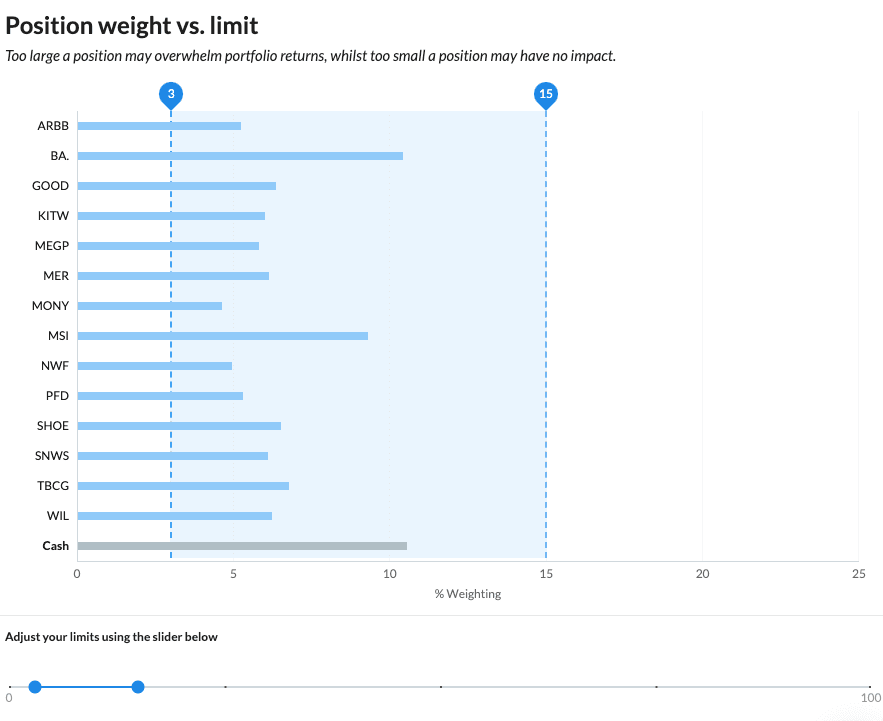How to avoid taking too much risk in a stock
It’s sometimes hard to know the provenance of investing’s best known sayings, but the excellent term “diworsification” is usually credited to Peter Lynch. In his 1989 book One Up on Wall Street[1] the ex-Fidelity fund manager made it clear that the wrong kind of diversification was a bad thing.
In context, Lynch was talking about the problem of companies that spread themselves too thinly. He preferred simplicity. He didn’t like firms that maxed out their time, energy and resources on non-core activities, often for depleting returns.
In the years since then, diworsification has come to mean much more to investors - but the spirit is still the same. These days it refers just as much to diversification in an equity portfolio as it does to company activities. And it’s a term that often crops up when commentators talk about risk. You see examples in articles from legends like the late Jim Slater to the present day investing great, Terry Smith.
Diversification 101
As a subject, diversification divides opinion. Modern portfolio theory (MPT) argues that portfolio risk can be adjusted by diversifying across a higher number of stocks. That tallies with the general message from the finance industry.
Yet, even a brief look at some of the strategies of great investors suggests that smaller, high conviction portfolios are sometimes preferable. Warren Buffett, the famously successful investor, once remarked that: “Diversification is a hedge for ignorance. It makes little sense for those who know what they're doing.”
So how can these two perspective be reconciled? The answer, according to some research, is that most investors should diversify more. But there’s also a subset of investors who can get away with smaller numbers of holdings because they genuinely have an edge.
This was the finding of a well known study[2] that examined the diversification choices of 60,000 individual investors at a US brokerage over a six year period in the 1990s. The study attempted to examine the impact of diversification on two levels: A) the risk reduction due to holding more than one security, and B) the risk reduction due to choosing imperfectly correlated stocks (ie. stocks that tend not to move together).
To cut a long story short, the researchers found evidence of the former but not of the latter and concluded that investors were under-diversified overall. They also managed to link under-diversification to behavioural flaws like overconfidence, trend-following and local bias. Plus they found that investors who over-weighted stocks with higher volatility and higher skewness were less diversified.
The twist, as I mentioned, is that the research found that while under-diversification is costly to most of us, a small number of investors under-diversify because they genuinely appear to have ‘superior information’.
Why does that matter to me?
With the knowledge that both under and over diversification could be costly to portfolio returns (unless you possess superior information), it makes sense to check your own portfolio's health in this regard.
Keep in mind that stocks which carry a heavier weighting in your portfolio, will also have an outsized impact on your portfolio returns. Does your conviction in this position match with its size? In other words, are you convinced that a stock on which you are overweight will help drive the returns of your portfolio?
On the other hand, it's important to identify positions which have very low weighting int your portfolio, because the size of the return of these stocks will also be reflected in the impact they have on the overall portfolio returns. For example, if a position is just 1% of your portfolio, then if the return on the stock doubles in a year, then it only adds 1% additional performance.
In all cases, it's important to continually justify why you are holding your stocks. Are you holding on to an outsized position because of a mis-placed conviction in it? Or are you holding onto more small positions than you can keep track of? Could you gain from having a clear-out?
Tools to maintain discipline
The Position weight tool within the Allocation tab of your Folio within Stockopedia can be used to help you maintain this discipline.
You can use the slider to set the maximum and minimum position size, so that when stocks fall outside of these values they will be highlighted. You can then use this as a trigger to rejustify the holding weight or rebalance your position.
The position sizes that you set are very much a matter of personal preference and should reflect your own investment style. As the research mentioned above suggests, some investors can run more concentrated portfolios than others.
But remember, high weighting in a single stock means also high active weights in that stock's sector, meaning you have both idiosyncratic weight of business as well as larger exposure to sector.


